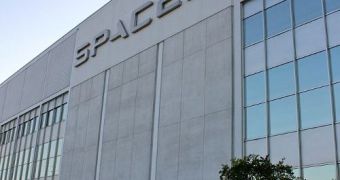Hawthorne, California-based Space Exploration Technologies Corporation (SpaceX) announced recently that it planned to extend its Florida-based operations, by adding new hangars to its facility.
The goal of the move is to ensure that all customer payloads and contracts are prepared for flight very fast. The extension mostly addresses the Falcon 9 rocket design, the same used to ferry the Dragon unmanned space capsule to low-Earth orbit and the International Space Station.
In addition to working with NASA under the terms of the CCDev2 agreement, SpaceX is also developing its own satellite launch program. This will allow it to close contracts with satellite builders and operators, for launching their spacecraft to various orbital destinations.
Up until now, the US government, and commercial and international customers, have placed a total of 40 orders for delivery systems to SpaceX. The combined value of these flights is around $3.5 billion.
The American space agency is undoubtedly the most important collaborator SpaceX has now. NASA accounts for 40 percent of the satellite delivery orders the rocket manufacturer received. But SpaceX needs to move fast if it wants to keep all these customers.
The main problem the company has is that it now only has access to a single hangar, where a single vehicle can be integrated at a time. The facility is adjacent to the Space Launch Complex 40 (LP40), at the Cape Canaveral Air Force Station (CCAFS), in Florida.
A nearby, old Delta 2 processing building called Hangar AO is also being allotted to the California company, which plans to launch 10 to 12 Falcon 9 rockets annually. In addition, SpaceX is also building its own upgrade to the SLC40, covering 16,000 square meters (172,222,566 square feet).
With the new upgrades, “we’ll be able to integrate three rockets at a time instead of one,” said the SpaceX director of mission assurance, Scott Henderson. He gave the speech earlier this month, at the Armed Forces Communications and Electronics Association conference, held in Cocoa Beach.
“What we’re really trying to do is increase launch rate, because if you increase launch rate you bring in new customers to Florida, they bring in suppliers, bring in people to watch launches, and all boats lift on the rising tide,” he added, referring to the creation of new jobs in Florida.
The US Space Coast was severely affected by the retirement of the space shuttles, and there is currently an important political push for companies to create new jobs. However, that does not fit with the commercial model that SpaceX is going from.
Still, the company hopes to be able to promote the creation of new jobs indirectly, by attracting other companies with its services, Space reports.

 14 DAY TRIAL //
14 DAY TRIAL //